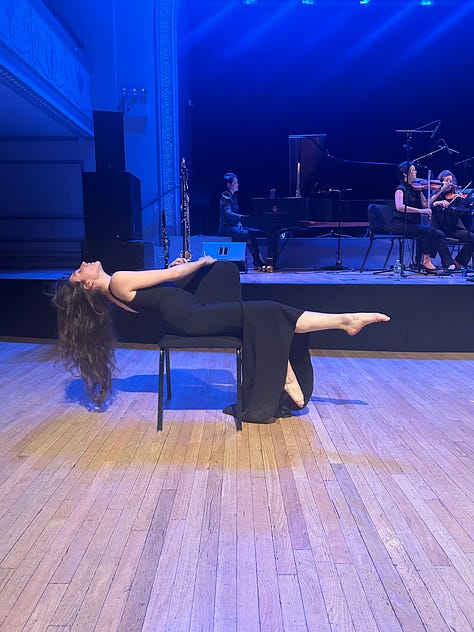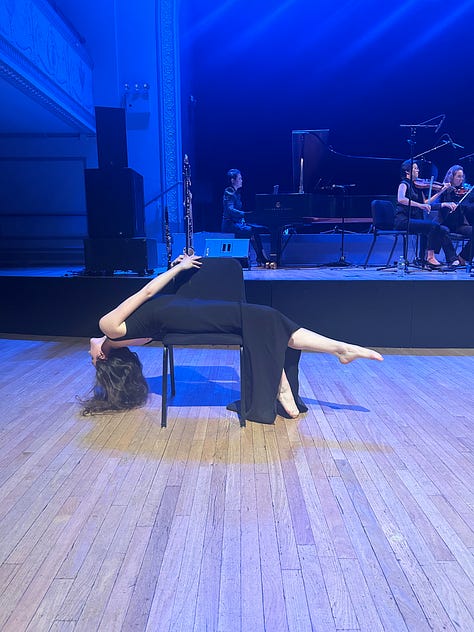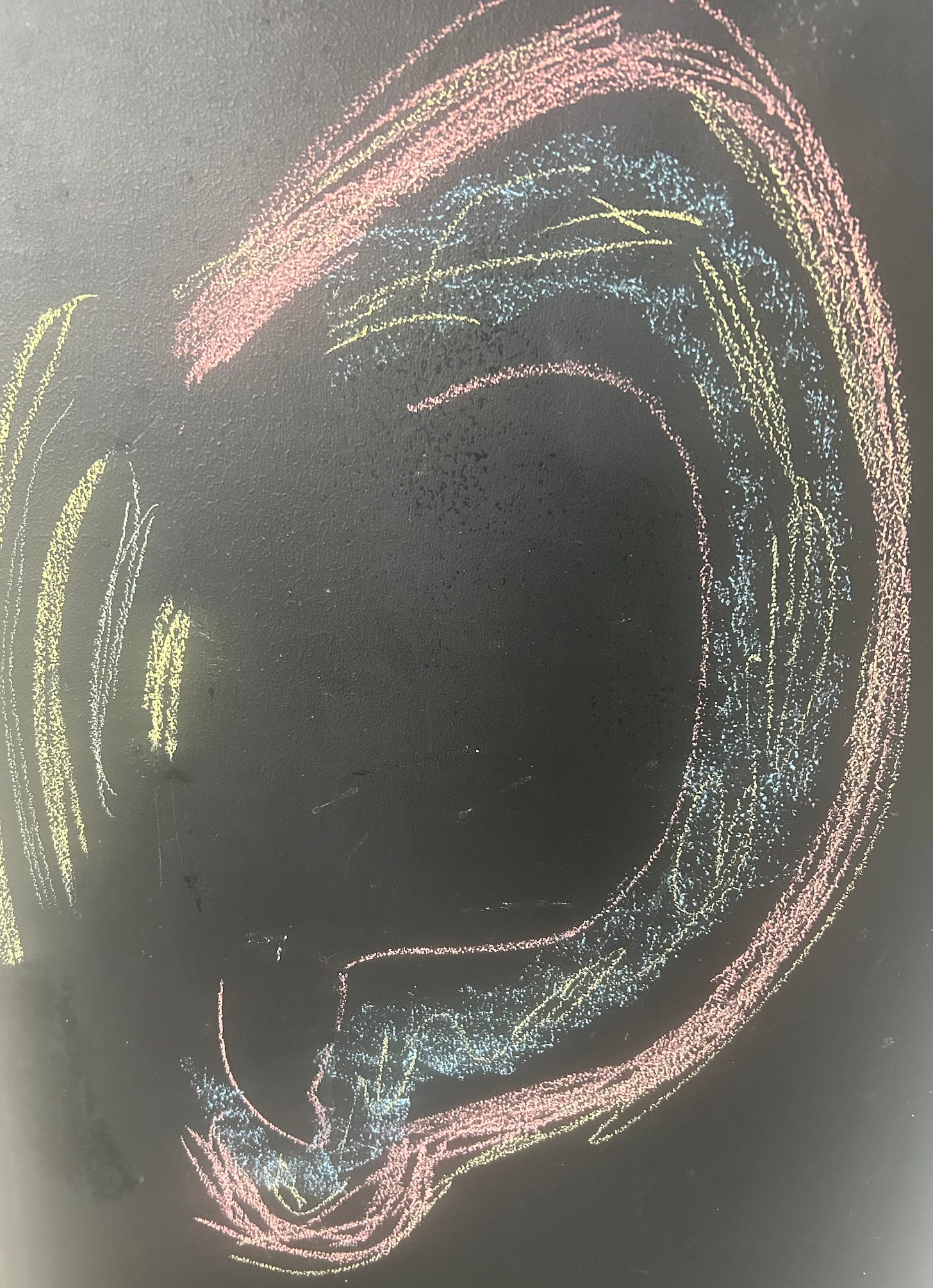Sounding Off On Deep Listening
What does it mean to listen deeply, to be affected by sound and vibration in the innermost recesses of your heart and soul? ListenUpNYC sounds off on the idea.
This ListenUpNYC package includes a look back at composer Pauline Oliveras, a short interview with yours truly on how I think about and apply the concept of deep listening, and a PODCAST with the uber-talented composer/musician/dancer, Annie Nikunen about her complex composition, The Sound of Space Between Us.
In collaboration with producer Jillian Crapanzano, a Reiki practitioner and spreader of love.
Deep Listening: The Album, Mindfulness Practice and Life Philosophy of Pauline Oliveras
By Caleb Sciannella


Caleb Sciannella, a recent graduate of Reed College’s ethnomusicology program, came to me through a friend who linked us because of our mutual interest in sound. (He is looking for gigs as a sound engineer, FYI:) The minute he came into my kitchen and I began to tell him about my sound baths, he nodded. “Oh,” he said. “Like ‘Deep Listening.’” And I did a double take. ‘Deep Listening’ is what I had myself termed what I did or was trying to do, but didn’t really talk much about. Was he psychic? No. It turned out he had learned about composer Pauline Oliveras, who I’d strangely never heard of, and so I asked him to write a piece about her. Here it is!
Deep Listening is a sonic movement developed by composer and performer Pauline Oliveros in the 1960’s that has grown in popularity over the past few decades parallel to the rise of mindfulness and mental health practices. The core ideology of Deep Listening focuses on differentiating between the way in which we hear passively–letting the sounds of the world around us wash over us and through us without much notice–and how we might better listen actively–tuning into the sounds and tones we might otherwise ignore. That tuning in includes focusing on our internal monologue and stray thoughts to achieve a deeper connection to ourselves and the world we inhabit.
It was Oliveros’ Deep Listening album that helped open the door to Deep Listening as a mindfulness practice that could be applied outside of musical settings.
On its surface, Deep Listening seems to be your typical ambient fare, with long, deep drones and vocals layered with delay and reverberation that add an ethereal and trancelike quality to the sounds. What makes this album unique is that the delay and reverberation come from the natural acoustic qualities of the recording space itself rather than being added digitally using effects like pedals during post production mixing.
Deep Listening was recorded 14 feet underground in the drained Fort Worden water cistern in Port Townsend, Washington, using only acoustic instruments including an accordion, trombone, voice and didgeridoo. What made this space so unusual and appealing to Oliveros and the Deep Listening Band as a recording location was the natural 45-second reverberation time that could be extended up to 70 seconds with the right resonance. This means that without any assistance or amplification, a sung or played note could be heard for up to a minute after being played, letting the band apply layer after layer of sound to build and diminish naturally as it reverberated throughout the cistern. The sense of space that this reverberation creates is unlike a lot of other kinds of recorded music, and is only really comparable to the choirs that perform in cathedrals like the Hagia Sophia in Istanbul or St. Peter’s Basilica in Rome.
As an album, Deep Listening functions as a great entry point into the broader practices and philosophies of Deep Listening. It invites the audience to pay attention and listen closely to different aspects of each sound, especially as they become muddied and less legible through the space itself. Simple aspects of the music like when a sound starts or ends become less obvious, and require the audience to intentionally focus their attention on the sounds themselves in addition to the shapes they make to form a larger melody or gesture. I listened to it while driving and discovered the power of adding rumble strips to the vibration, ha. Could be dangerous, but try it!
In addition to Deep Listening, Oliveros also created a collection of compositions that she called “Sonic Meditations.” Unlike most scores, these compositions weren’t written using sheet music and notation, but rather as plain text instructions designed to be accessible and performed by musicians and non musicians alike. While there is some good variation among the 25 meditations, many of them are focused on collaborative improvisational singing and listening with the scores only providing guidance for how these sounds should be inspired, whether conjured internally or as a response to the group. Participants must listen closely to each other, to themselves, and to the group as a collective. Rather than trying to clear the mind completely, sonic meditations acknowledge that some parts of our brain can’t simply be turned off, and instead directs us to focus on the sound around us and within us. This gives a heightened awareness of the self and one’s environment.
Additional info on Pauline Oliveros can be found in this New Yorker article: “Listening as Activism: The ‘Sonic Meditations’ of Pauline Oliveros.” Also Art Review’s: "What's the Point of 'Deep Listening.'"
I sat down with Caleb to discuss my own personal definition of ‘Deep Listening,’ that I came to with no knowledge of Pauline Oliveras. Here is the interview!
Steph’s Thoughts on Deep Listening
Interview by Caleb Sciannella
Sounding Off on Deep Listening, a Podcast Featuring Annie Nikunen: The Sound of Space Between Us
ListenUpNYC Podcast






